Indoor lemon care: basic recommendations
There is a category of florists who like exotic plants. They try to either get such a pet, or raise them on their own. Most often found on windowsills in houses lemon... It is appreciated for its evergreen disposition, the ability to bloom all year round, and as a result of fruiting. But in order to achieve the ripening of the fruit, you need to know how to care for a foreign guest.
Content:
- Description and best varieties
- Lighting, humidity and temperature
- Watering, feeding and pruning
- Transfer
- Diseases and pests
Description and best varieties
Lemon has its pedigree from the Mediterranean states, to be exact, from India. A little later, he was brought to America and Africa. In the living nature, representatives of the family can no longer be found, man has cultivated everything. Nowadays, the cultivation of sun berries is done only with the help of lemon groves. It takes a lot of effort to grow a lemon at home.
The tree is quite capricious, loves conditions as close as possible to the tropics, favors regular and timely care.
For normal growth, a bright place is needed, where not only air, but also the sun's rays enters in large quantities. Loves very much mineral and organic fertilizers.
To plant a green pet in your house, you need to decide on the type:
- Pavlovsky is not afraid of the shadow, for this he has been appreciated by gardeners for many years. After planting, it begins to release flowers only in the 3rd year. It begins to bloom in March-April and October. Within 12 months, the tree can give up to 15 fruits. They are distinguished by a thin skin, pleasant taste and weight (on average - 400 g). The plant can grow up to 2 m in height.
- Ponderosa is a low-growing bush, not exceeding 1 m, does not require special care, but it gives a small amount of berries - only up to 5 pieces. It does not differ in large size - up to 300 g. It begins to bloom only in the 4th year, but all flowers are removed. Only in the subsequent flowering can you leave up to 6 inflorescences. It has a thick skin (1 cm) and a sweet and sour taste, but contains many seeds inside the fruit.
- Meyer is a dwarf variety, reaches 0.5-1 m. Inflorescences are thrown out already 1-2 years after planting. Like the bush itself, the fruits are not bulky - up to 200 g. The taste of the fruit is plain. During the period, it brings up to 12-15 berries of sun drops, which ripen quickly (in 9 months). Of the minuses - in the winter, additional lighting is needed, it is often sick and is quite capricious in its care. The fruit boasts a round shape and a thin rind structure.
- Lucario is very common in European countries. The most unpretentious of all varieties. It bears fruit well with small lemons (150-180 g) - up to 16 pieces. Taste qualities are not distinguished by their peculiarities.
- Lisbon - characterized by thorns on the branches. It tolerates sunlight well and is tolerant of heat. Gives berries for the 3rd year in the amount of 16 fruits. It is appreciated for its excellent taste.
There are also varieties like Genoa and Kursk with excellent taste, Maidansky (endowed with high yields), Novogruzinsky, Eureka and Villafronka. All types have proven themselves only on the positive side, but they very rarely appear on sale.
Lighting, humidity and temperature
The most necessary thing for a plant is light. The southeast window sills are a good location. At noon, it is recommended to shade the bush, it is possible to acquire burns on the leaves. In winter, it is required to illuminate with phytolamps to increase the length of the day to 12 hours.
Lemon loves fresh air, but is sensitive to drafts. Therefore, they should be avoided. In order for the branches to develop evenly, the bush should be turned towards the light 1-2 times every 4 weeks. If you do not saturate the lemon with light, then its leaves will stop growing rapidly. Also, the lack of lighting will affect the taste of the fruit - it will become sour. In the spring, it is required to withstand a certain temperature regime. At this time, the tree is actively growing, developing and producing buds.
The following points should be followed to normalize the temperature:
- When flowering, the optimal air degrees are +18 C. If you exceed the threshold, then all the inflorescences will dry out and fall off.
- In the spring, you should reduce the heat to +12 C by taking out the flowerpot to the loggia, glazed balcony or open garden area. Such conditions will have a good effect on the growth of the crown.
- In winter, the temperature is good from +15 to +18 C and additional lighting.
- In summer, for the ripening of fruits, you need to slightly increase the heat in the room to + 21 + 22 C.
It is imperative to monitor the temperature rise to +25 C and the decrease in humidity. In this case, the plant may die. Lemon loves moisture very much. On dry days, it must be sprayed 2-3 times a day with soft, settled water. You should adhere to a humidity of 60-70% and +18 C - the most ideal conditions for growth.
Watering, feeding and pruning
Very important for lemon watering - in no case should you overdry the earth. For irrigation, melt water is required, river or rainwater is also suitable. In the absence of such a nutrient fluid, tap water is usually used. It must be boiled, cooled and slightly acidified. Such a process will soften it.
It is necessary to water the flowerpot around the entire perimeter evenly, distributing moisture. It is not recommended to pour water directly under the root!
It is necessary to carry out the watering process either early in the morning, or when the sun sets below the horizon. This is necessary so that less moisture loss occurs. Abundant watering should be started in March. In the summer months, it is more advisable to water up to 3 times a week, to control so that the soil does not dry out. If you dry out the earth, then the plant will respond with yellow leaves and their withering away. In autumn, water make-up is gradually reduced. In winter, irrigation is not needed too often - only once a week. Especially if the battery is far from the flowerpot with a bush, then watering is minimal, if a heat source is close, then as needed.
Lemon responds well to feeding. But only adult plants need a mineral supplement (upon reaching 3-4 years). For young shrubs, such stimulation of development is not needed.
It is recommended to feed it from March to mid-autumn - once every 21 days. It is imperative to alternate mineral fertilizers with organic. In the summer, they feed along with watering, and in the winter you need to let the moisture soak in - after 2-3 hours.
There are some tricks you can use when fertilizing:
- For a large harvest, the water is replaced with an egg shell tincture.
- In case of normal growth and development, you should not resort to any feeding.
- During the growing season, it is recommended to apply fertilizers with superphosphate 2 times.
- Ammonium nitrate is used to increase growth.
- For full-fledged development, fertilizing "Citrus mixture" is introduced. It contains all the trace elements necessary for the growth of a green pet.
Pruning for the plant it is necessary to form a beautiful crown, as well as to improve the yield. When a young plant reaches 25 cm in height, its top must be pinched (removed).This promotes the formation of side branches, which bear fruit.
Transfer
The transplant takes place annually up to 3 years. It is produced so as not to damage the roots of the plant. But for better growth, transshipment is used, while removing part of the land layer. After the shrub is transplanted no more than 1 time in 2-3 years in early spring, but until the moment of flowering and fruit formation.
Transplant features:
- You should choose a container for planting no more than 15 cm in diameter, about 30-50% more than the previous flowerpot. A cone flowerpot is perfect.
- During the transplanting process, the soil around the trunk is well moistened so that it can be gently pulled out of the flowerpot. After the clod of earth has been removed, it is required to carefully examine the outer roots. In case of damage, it is required to cut them off with sharp scissors or a blade.
- It is recommended to install a broken handle from a ceramic pot at the very bottom of the flowerpot, on the drain hole, so that the soil does not clog the hole. After that, a drainage is placed, on which a layer of earth is laid on top to the middle of the pot.
- The substrate should be taken nutritious, airy, loose, neutral acidity. It is more advisable to mix the optimal composition from leaves and sod soil (4 parts each), 1 part sand and manure each, and also add 1 tbsp. wood ash.
- Having filled the pot with soil, the root system of the lemon is set in the middle and covered with the rest of the soil tightly, so that there are no empty cavities.
Thus, the transplant is carried out by the transshipment method, while not shaking off the soil from the roots and without injuring the plants.
Diseases and pests
In order to exclude uninvited guests on lemon stalks, it should be regularly washed with room, settled water. Also, the bush can be affected by diseases:
- Fungal diseases (late blight, root rot, mold, sooty fungus) - in most cases, the affected area or roots are cut, disinfected and sprayed with chemical insecticides, for example, copper sulfate, Bordeaux liquid.
- Infectious diseases are not always curable. For example, Malchenko - the shoots dry up, affecting all the stems. With Gammosis, cracks in the bark are observed, from which the sap of the bush flows.
- Viral diseases (xylopsorosis, citrus cancer, leaf mosaic, triteses) cannot be treated. It is more expedient to remove the pot with the affected pet from healthy specimens and burn it.
The main pests for lemon are: aphid, scale insects, whiteflies, spider mites and thrips. At the first detection of insects, they must be removed immediately. After that, you need to wash the stems and leaves with soapy water. It is recommended to carry out cold ablutions of the bush twice a week.
If the actions do not lead to the elimination of the problem, then you need to treat the crown and branches with chemicals aimed at controlling pests.
Thus, in order for the plant to grow healthy and bear fruit abundantly, it is recommended to monitor its condition, not to overflow and shade at midday. The main thing is to feed on time and notice the problems that have arisen. Then the bush will delight not only with excellent development, but also with delicious fruits.
More information can be found in the video:



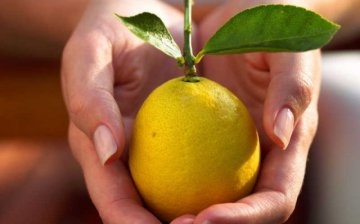
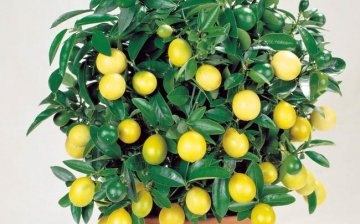
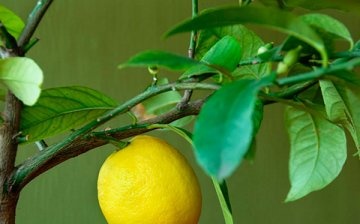
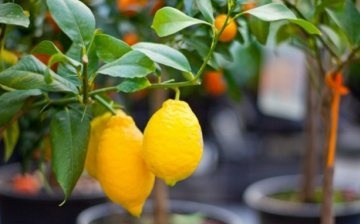

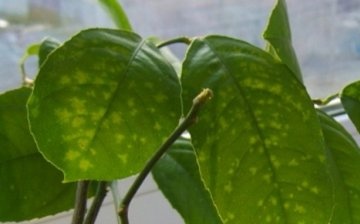







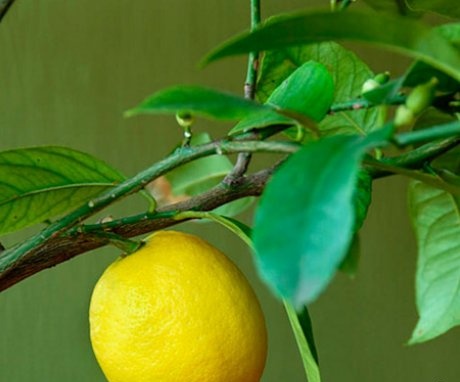
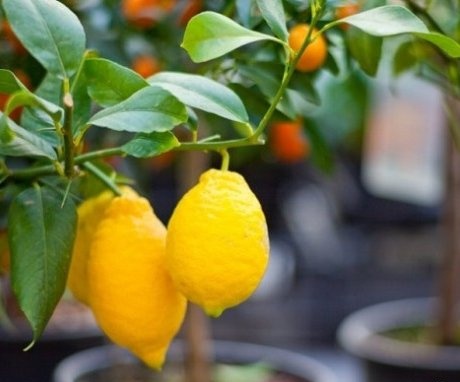
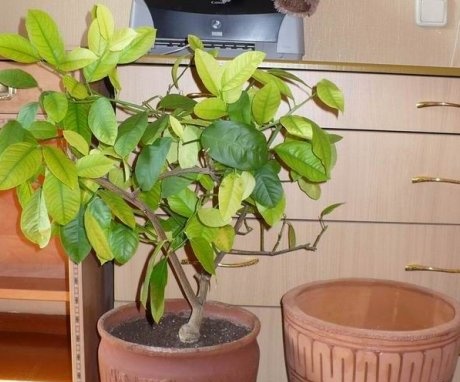
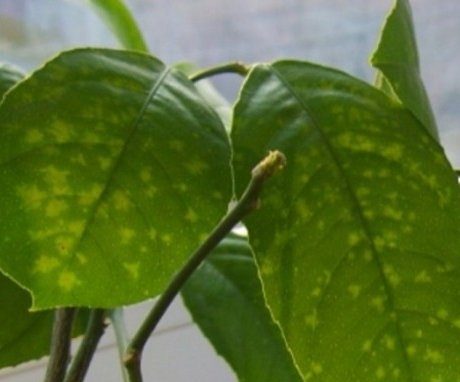
We tried to grow lemon in the room by planting seeds. Gradually, a beautiful lemon tree grew, but, for 10 years, the lemon never bloomed and began to disappear. We could not cure him.